Login
Registered users

In the Venetian lagoon, an artificial island has been transformed into a luxury resort and park. The island, built in 1860 is a state-protected landscape and has about twenty early-twentieth-century buildings, including a hospital and service buildings. The project’s complexity was managed through a shift in scale from the macro (masterplan) to the micro (details) by Matteo Thun + Partners.
All existing buildings have been ‘touched’ by the architects while closely collaborating with the superintendence of Venice - from the very early phase until the resort’s inauguration. The masterplan reorganizes the island into three main parts, each defined by its green areas. The first zone hosts the main hotel building (ex-hospital), a conference centre and an Art Nouveau brick residence. By largely following the layout of interiors from pre-war Italian rationalism with wide corridors, glass doors and terraces, Matteo Thun + Partners adapted the area of the exhospital (1936) to its reuse as main building of the luxury hotel, with 230 contemporary Venetian-style suites. The main architectural change in this building was the design of the generous rooftop terrace with the creation of the infinity pool and panoramic restaurant with a view on St. Mark’s square.Adjacent to the main hotel complex, is a conference centre and the historical house of the formers hospital director: an Art Nouveau brick residence, converted into a stylish holiday villa with a private garden, pool and spectacular views of Venice. Behind this, the old hospital’s formal gardens have been restored to their original layout to enhance the island’s scenery. By the next green belt hosts all the early-twentieth-century buildings: various brick blocks of different dimensions that have been restored according to the “box in a box” concept: building inside the old walls in order to protect the historic character of the buildings as encouraged by the latest heritage conservation guidelines. A team of restorationspecialists supported the architects to follow one of their main goals: preserve the historic value and ‘patina’ of the ancient walls. “La Maisonette” and “La Residenza” with generous suites, private gardens and pools and for the treatment buildings the “box in the box” principle has been applied, using uifferent variations of the concept. An accurate analysis of every single existing building helped the architects to always find the best proper renovation techniques for each of the constructions. “La Maisonette” was reconstructed by inserting a concrete and steel-structure inside the old brick walls creating a two storey building while a copper roof was added on the top of it. For “La Residenza” with its beautiful ancient wooden roof structure and Zen atrium wooden prefab boxes have been chosen to realize the “box in the box” concept. Matteo Thun + Partners placed these white boxes, where all suites are hosted, around the atrium.Further construction methods have been applied to a series of buildings present on theisland, always with the maintenance of the historic character in mind. Beside the recreation of the ancient façade, the original ground plan of the former Dopolavoro building, where the islands’ workers spent their free time after work (=dopo lavoro), has been recreated by an open steel structure. Today the building hosts the resorts’ fine dining “Dopolavoro Dining Room”, located directly at the islands’ private landing stage. Parts of the Spa with its wooden pitched roof and uniquely shaped windows of the former stables have been screened with a steel grid, inspired by the ancient shops of Venetian alleys, it provides shade to the Spa interiors. A yoga and meditation garden separates Spa and treatment buildings. Beyond the recreated olive grove and historical park, a geometrical garden opens onto a large vegetable garden serving the resort’s restaurants. A third green belt is planted with turnips and used for soil regeneration. The reopening of the island’s buried canal makes it possible to live an authentic Venetian atmosphere, surrounded by nature and calm. The project’s focus on the lagoonscape—water, slowness, and silence—is linked to consistent choices of locally available materials (brick and tiles, glass, mirrors, and Venetian textiles) in a contemporary key, without any sense of nostalgia or historicism. It is a unique place that caters to the upmarket tourist who wants an outstanding location offering “luxury through subtraction.” Away from the noise and bustle, and above all, without creating useless waste. JW Marriott Venice Spa & Resort is, in fact, an innovative luxury resort, a “three zero” village, both in its construction and in its subsequent management: zero kilometres, zero CO2, zero waste.










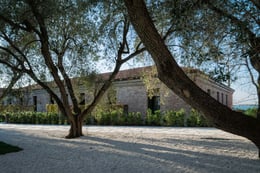





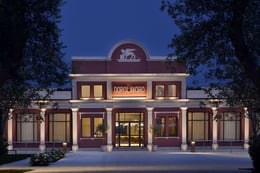










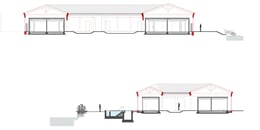
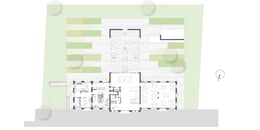

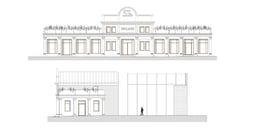






Location: JW Marriott Venice Resort & Spa
Completion: 2015
Gross Floor Area: 13,457 m2
Architects: Matteo Thun & Partners
Suppliers
Bathrooms: Zucchetti, Inda, Geberit, Scirocco H, Ceramica, Catalano, Kaledwei, Victoria + Albert
Materials: Margraf, Made a Mano, Antica Ceramica Bartoli, Parador, Brintons, Tai Ping, Stepevi, Cigierre, Zahna Tiles, Ruckstuhl, Elitis, rosa, Gres, Sicis, Ceramica Vogue, Kasthall, 3M, Adielle, Grazi Cristalli, Gibus
Furniture: Riva, Busnelli, Colber, Very Wood, Designers Guild, De Linea, B&B, Mater, Gervasoni, Thonet, Knoll, Vitra, F.lli Levaggi, Andreu World, Simmons, Tom Dixon, Flexform, Azucena, Living Divani, Porro, Ligne Roset, Puntmobles, Meridiani, Arte Venezia
Outdoor Furniture and Lights: Roda, Kettal, Tuuci, Ethimo, Unopiù, Simes Lighting: Artemide, Muuto, & Traditions, Lightyears, CTO Lighting, Il Fanale, Secto Design, Gubi, Wästberg, Santa & Cole, Classicon, Zuiver, Barovier & Toso, Merci, Carpyen, Zonca, Oluce, Azucena, Object Insolite
Fabrics: Rubelli, L'Opificio, Tempotest
Bathrooms: Duravit
Outdoor Lights: Zumtobel